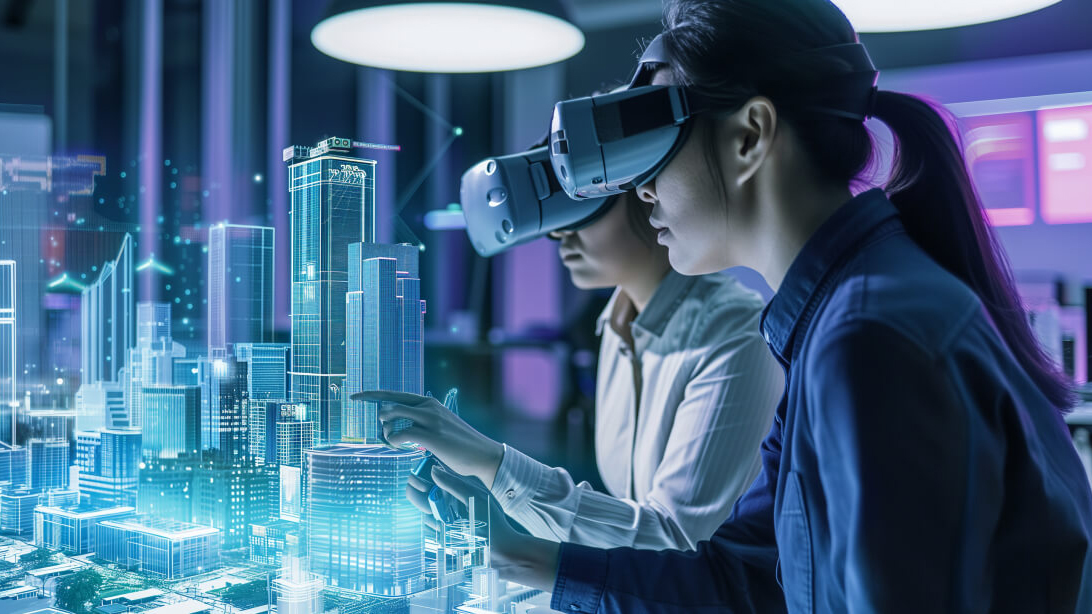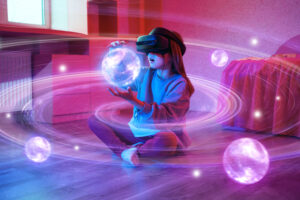
Experiential learning, a powerful educational approach where learners gain knowledge through experiences, is being dramatically transformed by the integration of Virtual Reality (VR). This innovative combination is set to reshape the future of education, offering immersive, interactive, and highly engaging learning environments.
The Power of Experiential Learning
Experiential learning emphasizes learning through doing. Unlike traditional methods that often rely on passive absorption of information, experiential learning involves active participation and reflection. This approach fosters deeper understanding, critical thinking, and the ability to apply knowledge in real-world contexts. Key components include:
- Active Engagement: Learners are actively involved in their own learning process.
- Practical Application: Knowledge is applied in practical, often hands-on situations.
- Reflection: Learners reflect on their experiences to gain insights and understanding.
The Role of Virtual Reality
Virtual Reality (VR) takes experiential learning to new heights by creating immersive environments where learners can interact with simulations that closely mimic real-life scenarios. This technology offers several unique advantages:
- Immersive Experience: VR provides a 360-degree immersive experience, making learners feel as though they are truly present in the virtual environment.
- Safe Learning Environments: Students can engage in complex or potentially dangerous activities safely, such as performing medical procedures or operating heavy machinery.
- Accessibility: VR can bring experiences to learners that might be otherwise inaccessible due to geographical, financial, or physical constraints.
How VR Enhances Experiential Learning
- Enhanced Engagement: The immersive nature of VR captures learners’ attention and keeps them engaged, which is crucial for effective experiential learning.
- Real-World Simulations: VR can simulate real-world environments and scenarios, allowing learners to practice skills and solve problems in a controlled setting.
- Immediate Feedback: In a VR environment, learners can receive immediate feedback on their actions, facilitating quicker learning and adjustment.
- Personalized Learning: VR can adapt to individual learning paces and styles, providing a customized learning experience that maximizes effectiveness.
Transformative Applications in Education
- Medical Training: VR allows medical students to practice surgeries and procedures without any risk to patients. This hands-on experience is invaluable for building competence and confidence.
- STEM Education: Students can explore complex scientific concepts and conduct experiments in a virtual lab, enhancing their understanding and interest in STEM fields.
- History and Social Studies: Learners can virtually visit historical sites or experience historical events, making learning more vivid and impactful.
- Vocational Training: VR provides realistic simulations of various trades, enabling learners to acquire and hone skills in a safe, controlled environment.
Challenges and Considerations
While the potential of VR in experiential learning is vast, there are challenges to consider:
- Cost: High-quality VR equipment and software can be expensive, potentially limiting accessibility.
- Technical Issues: Ensuring that VR systems are reliable and user-friendly is crucial for widespread adoption.
- Content Development: Creating effective educational VR content requires significant time and expertise.
Maximizing VR’s Impact for Experiential Learning

Maximizing VR’s Impact for Experiential Learning
Maximizing the impact of virtual reality (VR) for experiential learning can be achieved by focusing on several key areas. Here are some focus keywords and concepts to consider:
- Immersive Learning: Creating highly engaging and immersive environments where learners can interact with 3D objects and scenarios.
- Interactive Simulations: Using VR to simulate real-world environments and scenarios for hands-on learning experiences.
- Engagement: Enhancing student engagement through gamified learning experiences.
- Personalized Learning: Customizing VR experiences to meet individual learner needs and learning styles.
- Accessibility: Ensuring VR content is accessible to all learners, including those with disabilities.
- Collaboration: Facilitating collaborative learning experiences in virtual spaces.
- Soft Skills Training: Using VR to develop soft skills such as communication, teamwork, and problem-solving.
- Real-Time Feedback: Providing immediate feedback and assessment within VR environments.
- Cost-Effective: Highlighting the cost benefits of VR training compared to traditional methods.
- Scalability: Ensuring VR solutions can be easily scaled to accommodate different group sizes and settings.
- Safety: Creating a safe learning environment where learners can practice without real-world risks.
- Engaging Content: Developing high-quality, engaging VR content that captures learners’ attention.
- Lifelong Learning: Promoting VR as a tool for continuous, lifelong learning.
- STEM Education: Leveraging VR for enhancing STEM (Science, Technology, Engineering, and Mathematics) education.
- Medical Training: Utilizing VR for detailed medical training, including surgery simulations and anatomy exploration.
- Cultural Competence: Using VR to build cultural competence and empathy through exposure to diverse environments and perspectives.
- Virtual Field Trips: Enabling virtual field trips to inaccessible or dangerous locations.
- Technical Skills Training: Providing hands-on training for technical skills in fields like manufacturing, aviation, and more.
- Cognitive Skills Development: Enhancing cognitive skills like critical thinking and spatial awareness through VR experiences.
- VR Integration: Strategies for integrating VR into existing educational frameworks and curricula.
By emphasizing these keywords and concepts, VR can be effectively utilized to enhance experiential learning and provide impactful educational experiences.
The integration of experiential learning and Virtual Reality is set to revolutionize education. By providing immersive, interactive, and engaging learning experiences, VR enhances the effectiveness of experiential learning, preparing students for real-world challenges like never before. As technology advances and becomes more accessible, the fusion of these two powerful educational tools will continue to shape the future of education, making learning more dynamic, impactful, and inclusive.


